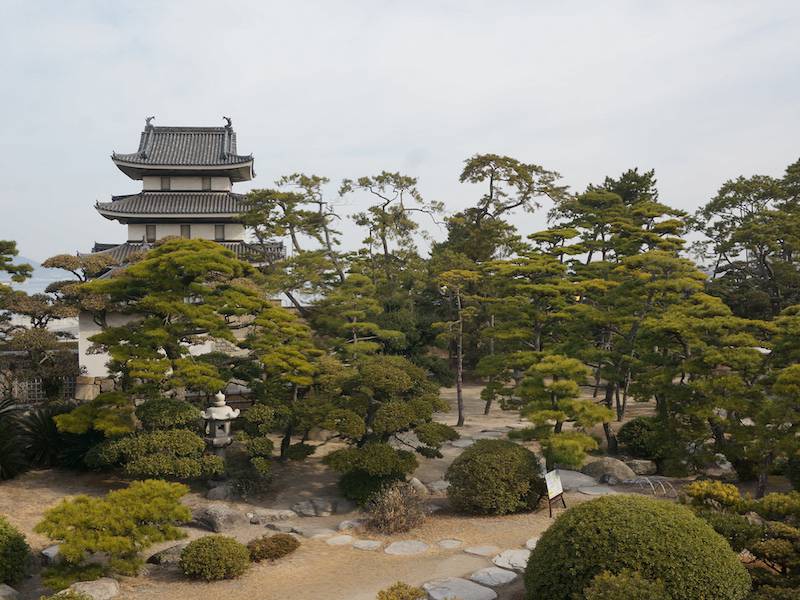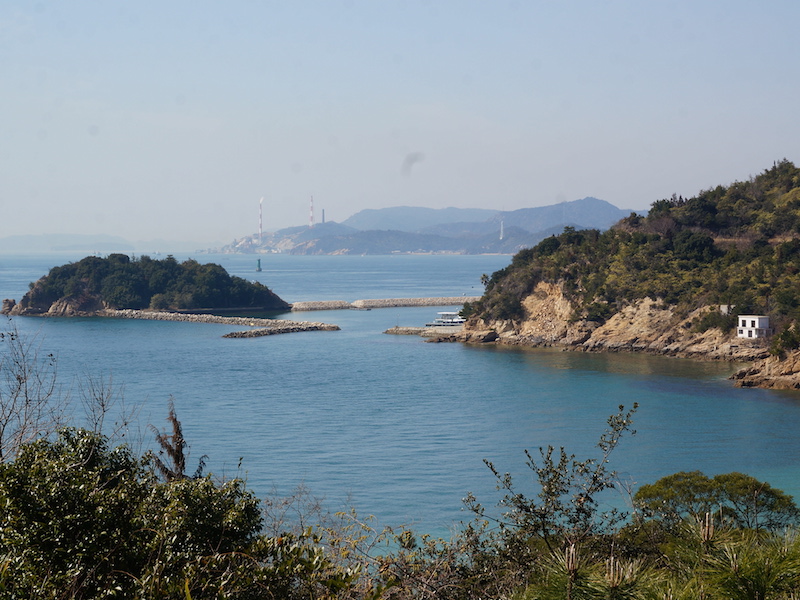Off the Beaten Oath in Japan: Takamatsu’s Hidden Charms and Surprises

JNTO invited a selected group of buyers and journalists to experience more of Japan’s hidden gems in late February. HQ spent two days exploring Takamatsu, the laid-back capital of Kagawa Prefecture and the main gateway to Shikoku Island, and the nearby island of Naoshima, where the awe-inspiring architecture and art would impress even the not-so-arty folks. Text and pictures by Katie Lau
With a record high of about 28.7 million visitors in 2017, Japan National Tourism Organisation (JNTO) aims to promote Japan’s “diverse charms” as part of their marketing strategy towards specific target groups, including highlighting lesser-known destinations by organising fam trips to cities like Matsue, Kitakyushu and Takamatsu this year.
Takamatsu may lack international chain hotels, Michelin-starred restaurants and foreigner-friendly attractions – but that is a big part of its appeal. Hideki Hashimura, General Manager of Takamatsu Convention Visitors Bureau, told me over a kaiseki dinner, “Our target groups are those who have visited major cities like Tokyo and Osaka and want to look for something different”.
Japan on a budget
Almost everything (e.g. accommodation and meeting facilities) is cheaper in Takamatsu compared to major cities in Japan, and you can experience the real Japan without the crowds as well. Easily accessible on Japan’s well-travelled Golden Route (about one hour from Tokyo by plane or two hours from Osaka by Shinkansen via Okayama), Takamatsu boasts many of Kagawa’s great sightseeing spots (e.g. Japanese temples and gardens), traditional arts and crafts like stone masonry, bonsai and lacquerware, as well as a variety of regional culinary specialities like Sanuki udon, olive beef, olives, and seafood.
Facing the Seto Inland Sea, Takamatsu is situated in northern Kagawa, Japan’s smallest prefecture. It is a modern city that once thrived as a castle town of the Matsudaira Family during the Edo Period in the 17th century, and many historic sites in Takamatsu reflect this heritage. Tamamo Park, which houses the ruins of Takamatsu Castle, features the Hiunkaku building with large tatami rooms. Constructed in 1917 as a residence and governmental office, it is used today as an exhibition and meeting space good for luncheons.
Another must-see is the charming Ritsurin Garden, one of Japan’s best traditional landscape gardens featuring bridges six ponds and 13 artificial hills. Shoko Shoreikan, a traditional Japanese building with a beautiful yard, is ideal for all kinds of receptions. It’s worth noting that this garden offers a change in scenery with every step thanks to its dramatic landscape. The Kikugetsu-tei teahouse is also a great spot to relax and enjoy a tea break.
For a magnificent view of the Seto Inland Sea(described by English travel agent Thomas Cook as a ‘beautiful spectacle’) and the city, head to the 293-metre high Yashima ("roof island"), a flat topped volcanic plateau just outside of the city centre. The site of an important 12th century battle during the Gempei War between the Taira and Minamoto Clans, the mountain features a circular promenade, an aquarium, and Yashima Temple, the 84th of the 88 temples on the Shikoku Pilgrimage.
An arty city
For a small town, Takamatsu has seen its share of famous artists over the years, such as Japanese-American furniture designer George Nakashima, who used to run a workshop in Takamatsu, which now serves as a museum and a gallery. Another example is Japanese-American sculptor Isamu Noguchi, who first visited Shikoku in 1956 in search of stones for his project in Paris and his works are easily spotted throughout the city.
And of course, a trip to Takamatsu will not be complete without excursions to nearby islands such as Ogijima (Cat Island), Megijima, and most importantly, Naoshima (60 min by ferry). The most popular time to visit these islands are during the Setouchi Triennale, a contemporary visual art festival launched in 2010 featuring artworks over several islands and locations with a loyal following in Japan and abroad.
Experience art like never before
On regular days, Naoshima is also a haven for art lovers. A peaceful yet tiny (14 sq kilometers) no-nonsense “art island" with abandoned beaches, Naoshima is the epitome of slow tourism – visitors are encouraged to stay longer on the island and expected to strictly observe rules and instructions for an immersive experience in art.
Naoshima
The five modern museums in Naoshima are mostly designed by creative genius Tadao Ando, whose minimalist aesthetic and use of natural materials like concrete and wood plays off perfectly with light, space, and nature. The Chichu Art Museum is an underground space made of concrete with open-roofed skylights that allows natural daylight to come in and affect the appearance of the artworks and the ambience of the space, depending on the time of day. From Claude Monet’s Water Lilies paintings to Walter de Maria’s stately art space with strategically placed objects, light and nature is used on an epic scale in harmony with its surroundings to create a sublime art viewing experience.
Another masterpiece by Ando is Benesse House, a museum-hotel located on a hilltop featuring works by Twombly, Hockney, Warhol, and Jasper Johns, to name just a few. Designed with the concept of “coexistence of nature, architecture and art”, the complex features meeting rooms of different sizes with panoramic sea views.
Located in the village of Honmura, the visually stunning Naoshima Hall designed by architect Hiroshi Sambuichi is another prime example of architecture coexisting with its natural environment. Consisting of a main hall, a community centre, and a garden, the venue utilizes the island's prevailing winds to circulate air inside the hall, and its sculptural roofs made from cypress wood features an opening that allows fresh air to flow through the building.
World-class convention facilities
Takamatsu is a very compact city where most attractions and points of interest are within walking distance. The centrally located JR Hotel Clement Takamatsu, Shikoku’s largest urban hotel with 300 guest rooms, boasts banquet halls of different sizes, including one with 1,200 sq metres.
Only a three-minute walk away are the Sunport Hall and the Kagawa International Conference Hall, both located in the Symbol Tower building. Created as a civic culture centre, the Sunport Hall features a Grand Hall with a maximum of 1,500 seats, two smaller halls and 12 different-sized meeting rooms, as well as rehearsal rooms. The Kagawa International Conference Hall offers conference rooms with beautiful sea views, and its main hall is equipped with interpretation booths for six languages and a special reception room.
More fun and business in Tokyo
Apart from the fam trips, JNTO also arranged visits to the Tokyo International Forum (a magnificent venue with a vast glass atrium, eight conference halls and more than 30 conference rooms); and Ginza Six, a new luxury shopping mall where participants watched a riveting performance at Kanze Noh Theatre (a style of traditional Japanese musical drama) on the basement floor. Participants then took part in Japan Convention Trade-Mart at Keio Plaza Hotel Tokyo learning more about Japan’s meeting destinations with representatives from 24 Japanese convention bureaus.
The four-day programme finished with a farewell party at the South Observatory of Tokyo Metropolian Government Building, one of Japan’s many popular spots to catch a city view.
CONTACT INFO:
Takamatsu Convention & Visitors Bureau
Japan National Tourism Organisation
Other Articles
About Us
Supported by the Union of International Associations (UIA), the International Association of Professional Congress Organisers (IAPCO) and the Interel Group, the global public affairs and association management consultancy, Headquarters Magazines serve the needs of international associations organising worldwide congresses.















